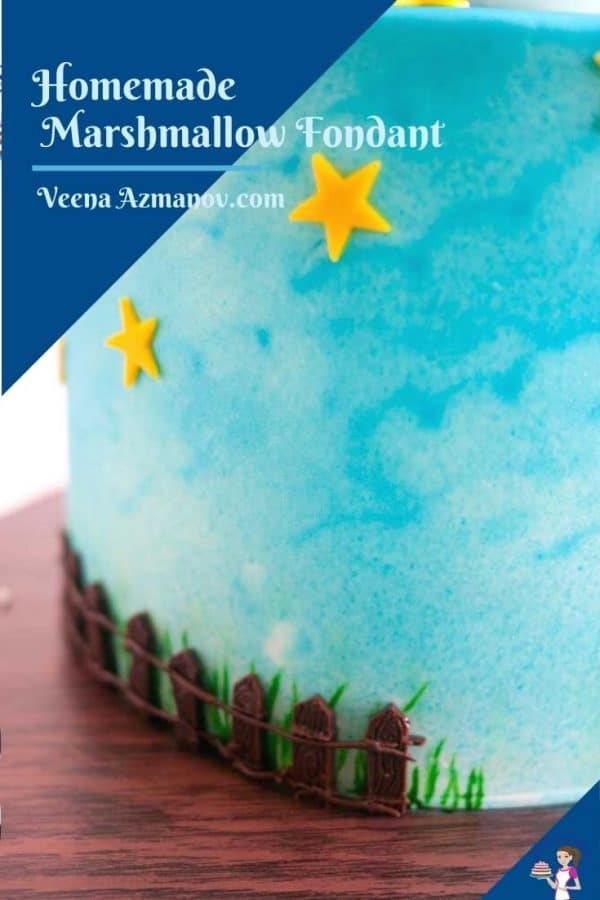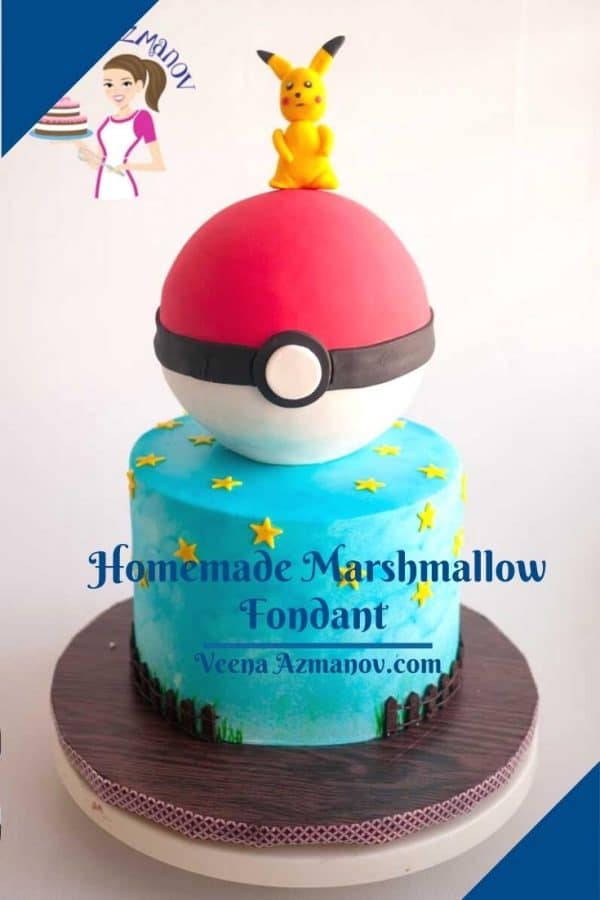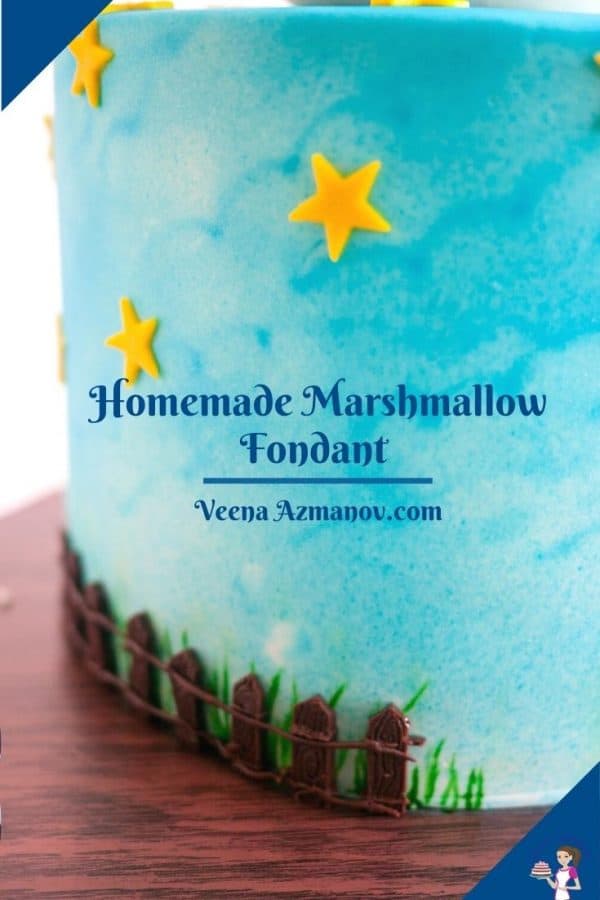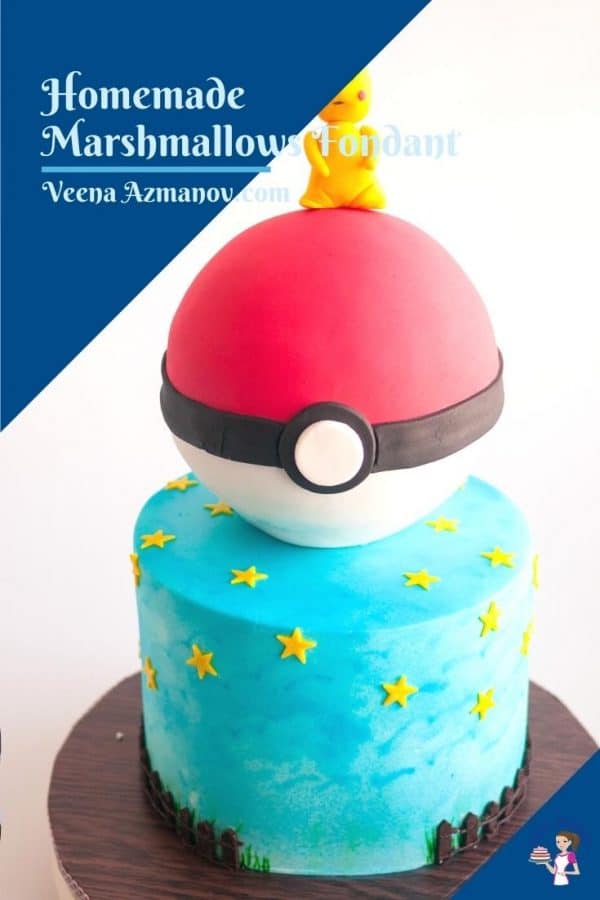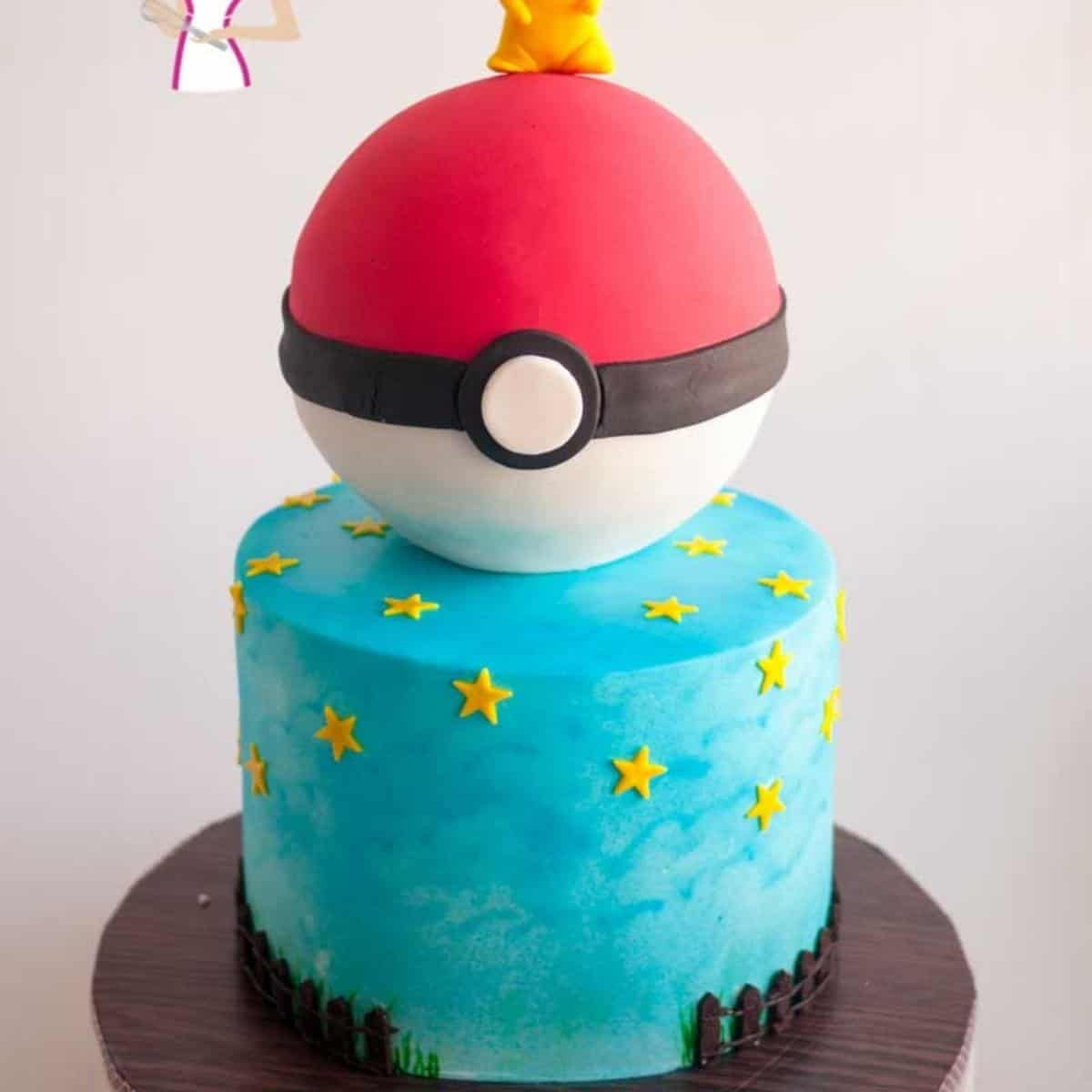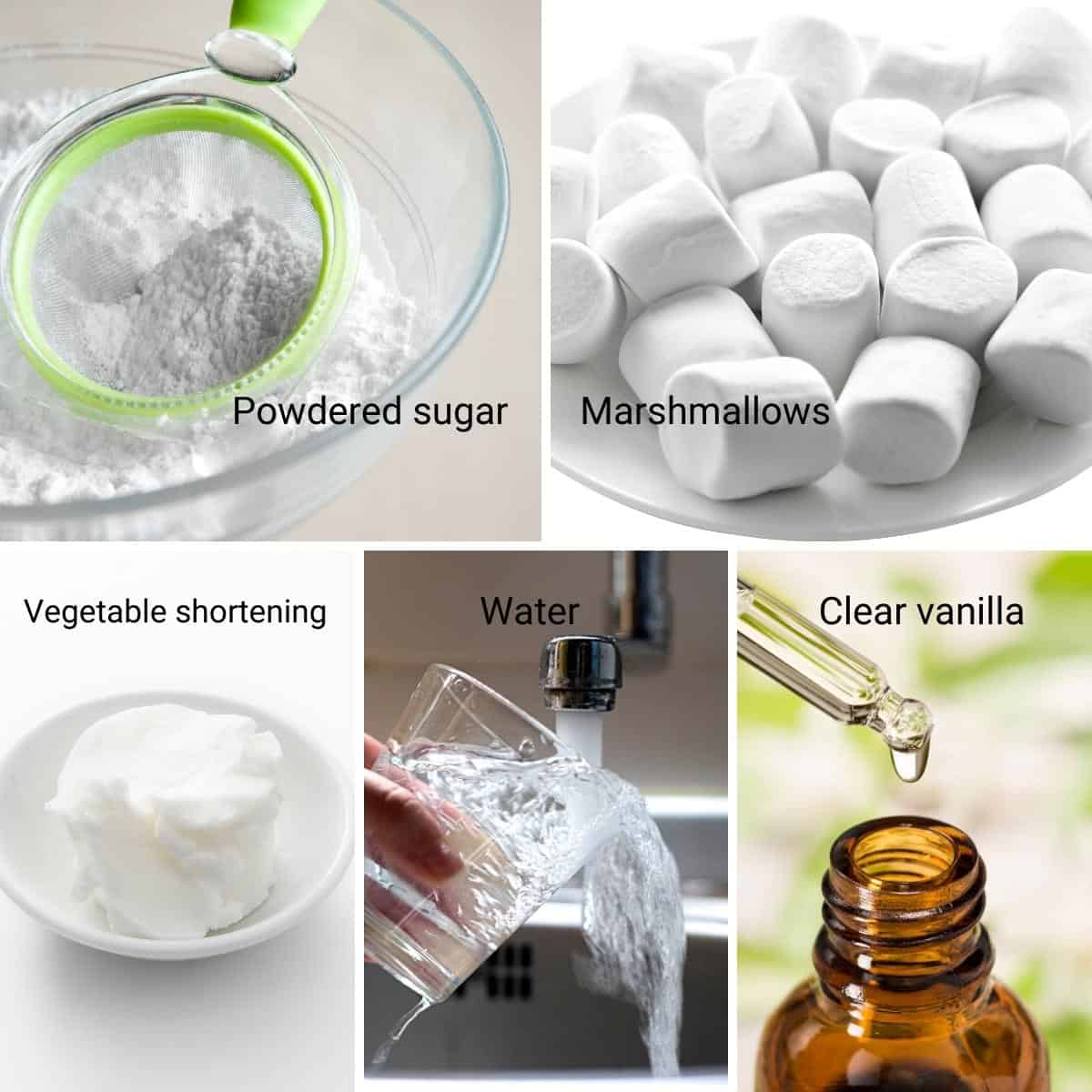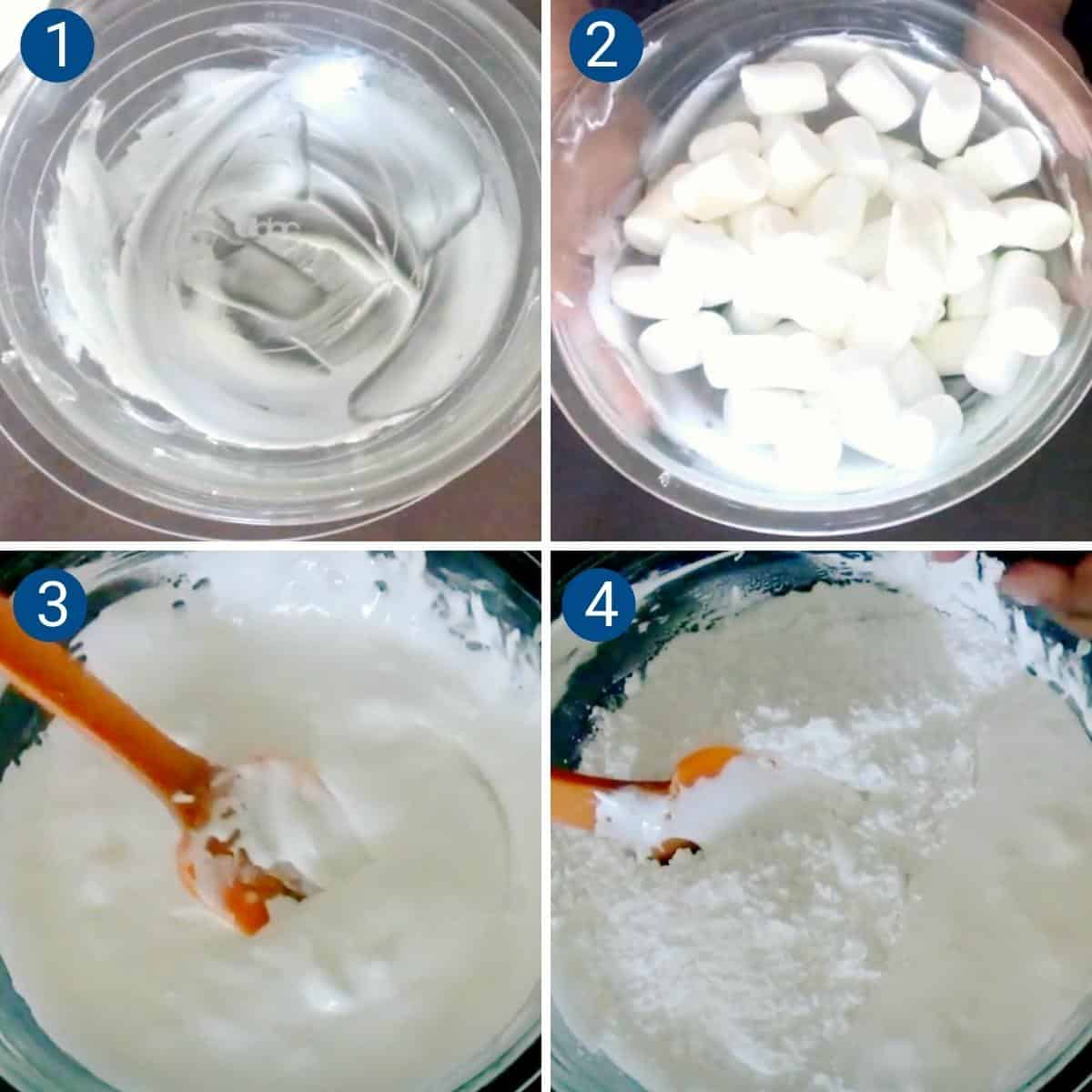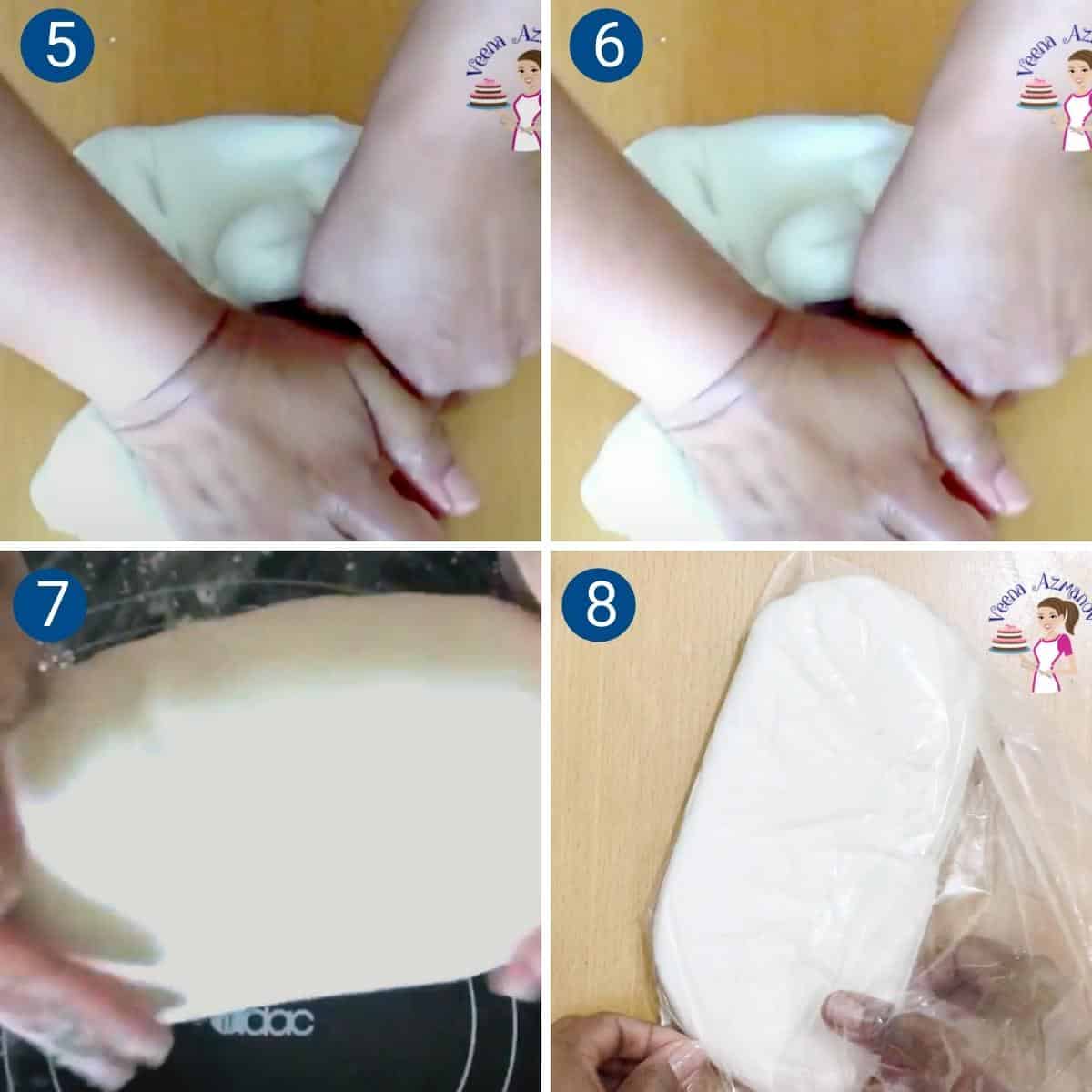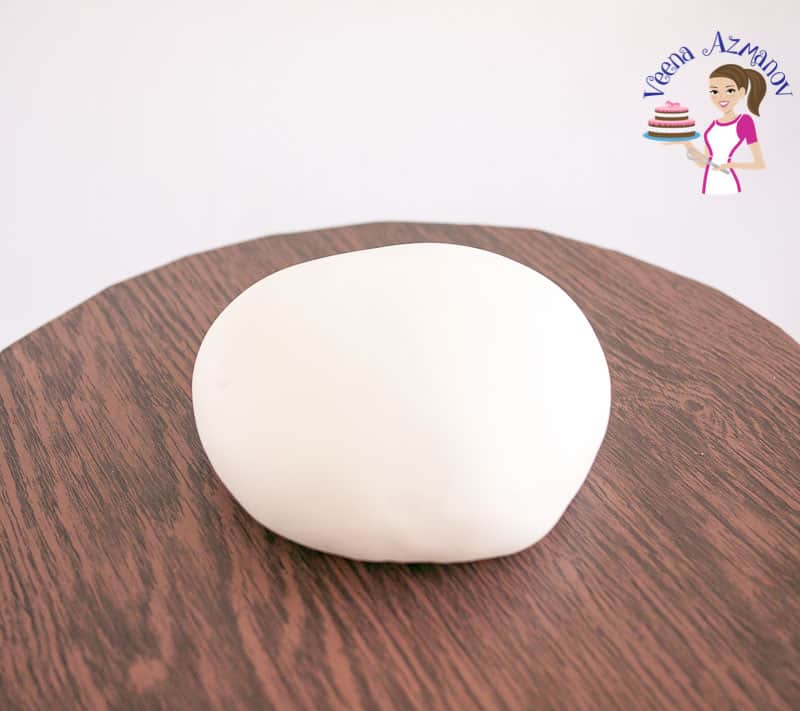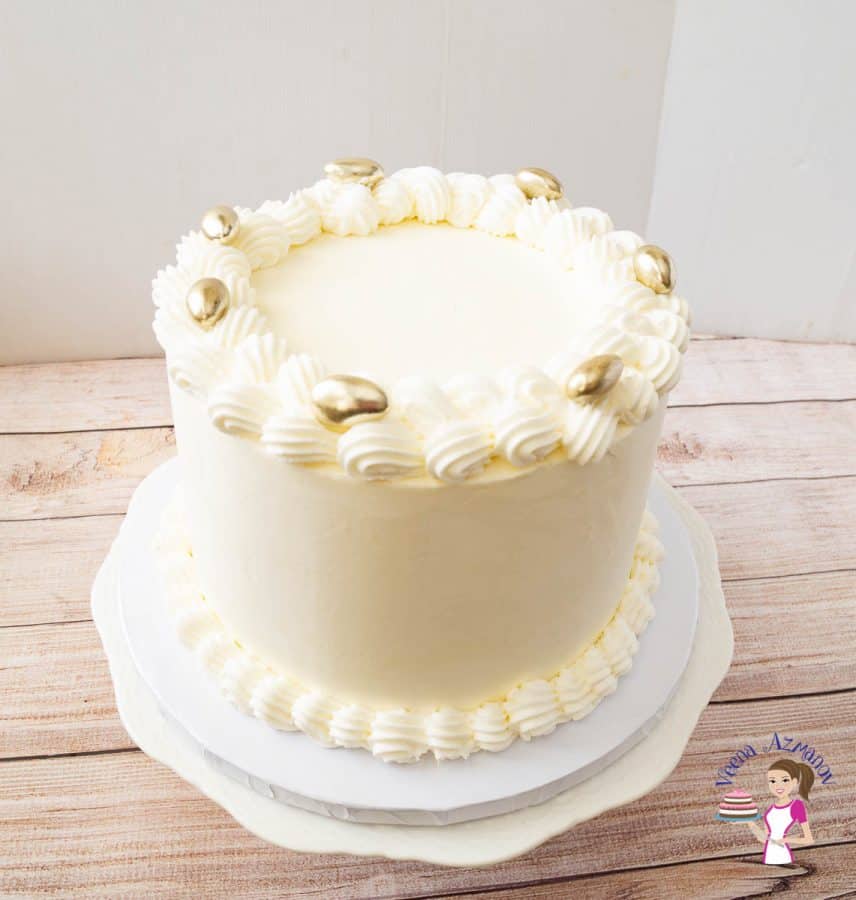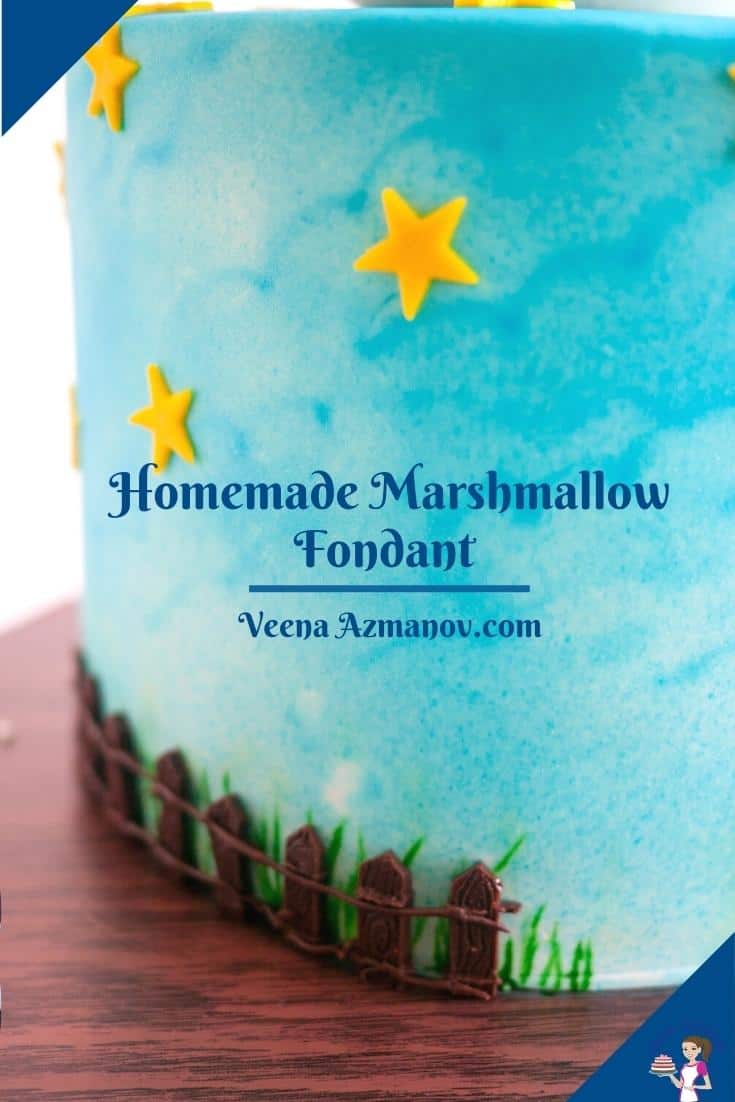You are probably wondering why I use another fondant recipe when I have the best Homemade Fondant Recipe already. Well, I do love that recipe! In fact, it’s my absolute favorite along with my homemade vegetarian fondant recipe. But, when you are in the cake decorating business you want to give your customers more options. The first time I made my own mmf was when I had a customer who said: “I only like marshmallow fondant and nothing else”. And, I had no problem making it. Moreover, I kinda liked the smell and the kids loved the taste. But, it needed a bit more work on the recipe. So, after several trials, I created this formula that works for me every single time. It’s just the right balance of marshmallows, water, and vegetable shortening.
Why make this fondant?
It has the perfect texture and is a dream to work with. Even if you are a novice or a cake decorate you will enjoy using this recipe over and over again. Also, kids will love to eat it because it tastes like marshmallows. And the great thing about this fondant is that it has good elasticity. In addition, unlike store-bought fondant, due to good elasticity, you can roll this out really thin. And the best part is that it has a long shelf life. Leftovers can be but in plastic wrap and in an air-tight container. In fact, it will keep on the counter for a month and in the refrigerator for 3 months or in the freezer for up to a year. You can use this fondant for cakes, cupcakes as well as cookies. And yes, you can use them for your regular shaped celebration or wedding cakes, or novelty cakes. And you can also add cocoa powder to make chocolate marshmallow fondant.
Ingredients and substitutes
Powdered sugar – Also known as confectioners sugar or icing sugar. You want to use 10x, well-sifted powdered sugar to prevent a lumpy fondant. Ideally, cane sugar will give you a better smoother fondant while fondant made from beet sugar can be grainy. Water – it is best to use water to make the marshmallows a nice soupy consistency. I have not tried it with anything else. Flavorings – I am using clear vanilla extract to ensure my fondant is white. You can also. use other flavorings such as almond, rose, orange, etc. Marshmallows – I have used large size marshmallows because that’s what I get but smaller marshmallows will melt quicker Vegetarian marshmallow fondant – I believe we can find vegetarian marshmallows these days. So, if you looking for a vegetarian option, you might want to look for these. However, I have not tried making fondant with these so can’t give you any tips at this time. Perhaps later I will try it and let you know how it turned out. Vegan marshmallow fondant – Yes, you can make this a vegan recipe very easily by just using vegan marshmallows. The process is the same as below.In fact, I have used this batch of marshmallow fondant to make the bottom tie of this Pokemon Cake. I also use this cake for the video tutorial on how to get straight sharp edges on fondant.
Marshmallow fondant recipe
Smear a large microwave-safe bowl with a thin layer of shortening. Place marshmallows in the bowl.Pro tip – smearing the vegetable shortening in the bowl will prevent the marshmallows from sticking. Pour the water all over the marshmallows. Melt marshmallows in the microwave on high for 60 to 90 seconds at 30 second intervalsPro tip – the marshmallows will still hold their shape even when melting until you stir. So don’t overheat them. It will be a soupy sticky mixture. Add about 3/4 of the powdered sugar and combine with a wooden spoon. Then transfer the mixture to the working surface dusted with powdered sugar.Pro tip – If you do not want to knead by hand, you can also transfer this mixture to a stand mixer with the dough hook.
Next, transfer the mixture to a greased surface counter and knead the fondant with the remaining veg shortening and powdered sugar as needed. Grease your hands with vegetable shortening makes it easier to work. Pro tip – If possible do not add too much of the powdered sugar at this point as it will stiffen when the gelatin sets. You want the fondant to form a dough but not be too dry. A little sticky is ok too. Divide fondant into two. Place in a storage bag then in a container to prevent drying Divide into two portions and place each in a zip-lock bag. And seal well.Pro tip – fondant is sugar so it dried very easily. If it forms a crust it will give you are very grainy fondant. So, make sure to always keep it double wrapped in a plastic then storage bag or plastic then container. Leave in the refrigerator overnight or at least 4 hours.Pro tip – it is important to let the fondant rest because this gives the gelatine time to set and become elastic. Once set you can store it at room temperature.
Don’t have a microwave?
I know, I always take it for granted that everybody has a microwave. Sorry!However, if you do not have a microwave you can still melt the marshmallows using a double boiler method, just like you melt chocolate. But, do not put the marshmallows on direct heat as it may break down the elasticity in the gelatin (I think). So, to make your own double boiler:
How to use this fondant
Take the fondant out of the fridge and leave it at room temperature. When ready to use knead it until it is smooth and pliable.Pro tip – if the fondant is hard you can warm it in the microwave for 10 seconds but making it too warm will result in a too soft fondant that is difficult to handle. It is best to use vegetable shortening to knead the fondant. However, if it is still quite sticky you can add powdered sugar.Pro tip – the elasticity of your fondant is dependent on the quality of your gelatin and the amount of powdered sugar used. Lightly dust your counter with mix of powdered sugar and cornstarch and roll the fondant using a rolling pin. ( I like to make a pouch using a sock or stockings and filling it with equal amount of corn starch and powdered sugar) You can see me use my homemade marshmallow fondant in my video – Pink Tree Trunk Cake with the Baby Booties and Baby shoe cake toppers. It’s obviously perfect for novelty cakes. I used this fondant on the bottom of my Pokemon cake. Yes, you can also use it to get nice sharp edges on your round cakes. It works beautifully. In addition, you can use it for your figure modeling, adding a bit of CMC just as you do with regular fondant. Add 1 tsp CMC or tylose to every 250 grams of fondant. Knead well, then go ahead and make your sugar creations and toppers like these baby booties and baby shoes. In addition, read my 14 tips for working with fondant.
Notes
If you already know the flavor and color of the fondant you need, buy marshmallows in that color or flavor. For example, buy pink strawberry flavor marshmallows if you need a pink fondant. Then, you can omit the color or flavor to the recipe above. Storing fondant – Fondant can be stored in a cool dry place away from heat and sunlight for up to 4 weeks at room temperature. And, you can also keep it for up to six months in the fridge and up to 2 years in the freezer. However, make sure to always wrap the fondant well in cling wrap first, then place it in a ziplock bag, and then in an airtight container to ensure it does not dry out. Fondant is too hard? Thaw the fondant in the fridge for 10 seconds so you can knead it. Then, add a teaspoon or two of glycerin to help soften it. Next, add vegetable shortening and knead it some more. And, if this still does not work, it’s best to use this fondant for decorative purposes and decorations. And, make a fresh batch for covering the cake White fondant – If you need a white fondant, I recommend you use white-colored gelatin (unlike Knox which is almost beige). Also, use veg shortening instead of butter (because veg shortening is white while butter is yellow). Dairy-free fondant – Also, if you want to make this parve or non-dairy, use non-dairy liquid creamer and veg shortening instead of butter.
Fondant covered cakes
How far in advance can you cover a fondant cake? A basic chocolate or vanilla cake with buttercream or ganache can be covered in fondant 2 to 3 days ahead and left at room temperature. And, if the cake has any perishable filling or frosting it must be kept in the fridge. How to store fondant cakes? – At room temperature! Leave a fondant-covered cake in a cool dry place at room temperature away from open windows or wind. And, if the cake contains perishable frosting, you can also store it in the fridge. How long do fondant cakes keep? The shelf life of a cake depends on the cake recipe as well as the fillings and frostings used. In fact, fondant does do a good job of locking in moisture, which automatically extends the life of the cake.
How much fondant do I need for my cake?
The chart below is based on 4-inch tall cakes. For shorter height you will need less and tall cakes will obviously need more. Having said that, this presumes rolling fondant closer to 1/8″ thickness. If you roll fondant too thick closer to 1/4″ inch thick you will need more.
How do you color fondant
I have shared two detailed posts related to fondant one was 14 must-know tips for working with fondant and the other is How to color fondant. In addition, I’ll also give you a few important tips here. But, if you are new to fondant, you may find those useful.
First, always use edible gel food coloring to color the fondant. Because they will not make your fondant too soft in-consistency since they are very concentrated in color. And, if you don’t have food color gels – you can also use liquid color at the beginning of the recipe while reducing the original quantity of liquid in the recipe. Food color gels will intensify over time. So, if you color it ahead of time – make it one shade lighter and keep it for a few days. That way, you won’t have to add more white or use too much color gel. Also, color gels can dye your hands. So, it’s best to use gloves when coloring fondant. In addition, rubbing veg shortening on your gloved hands also helps. However, I find that working with gloves is not easy, especially with sticky fondant. So, I work with fondant by just rubbing my hand with vegetable shortening, and then washing them clean with a cream-based detergent.
Frequently asked questions
Troubleshooting & tips
If you are new to working with fondant you may find this article, 14 tips for working with fondant, useful. It answers many of your fondant questions. For example:
Why is my fondant cracking? What to do if my fondant is too soft? What to do if my fondant is too dry? Why is my fondant sweating? Why is my fondant tearing? My marshmallow fondant is too hard what can I do?
Did you LIKE this recipe? Save it for later. You can find my recipes on Pinterest. Follow me on Facebook, Twitter, and Instagram.Subscribe, and I’ll send you new recipes right to your inbox. Thank you for sharing - Save for later

